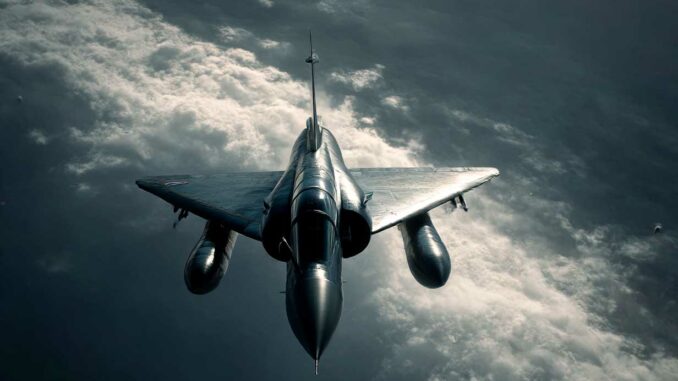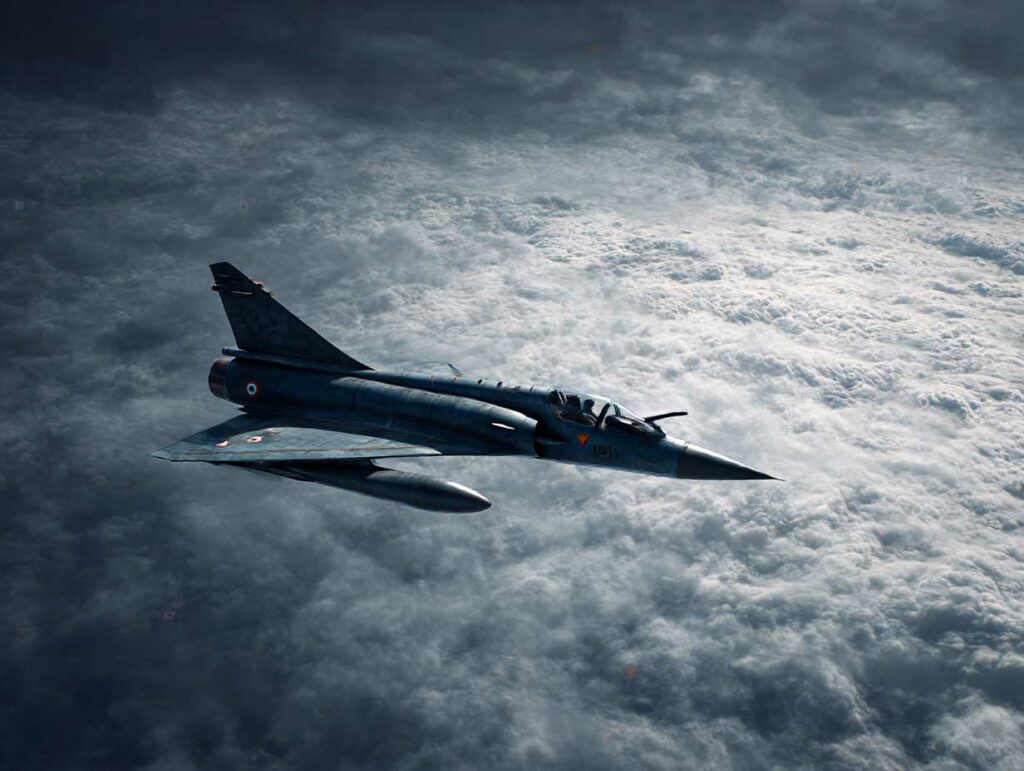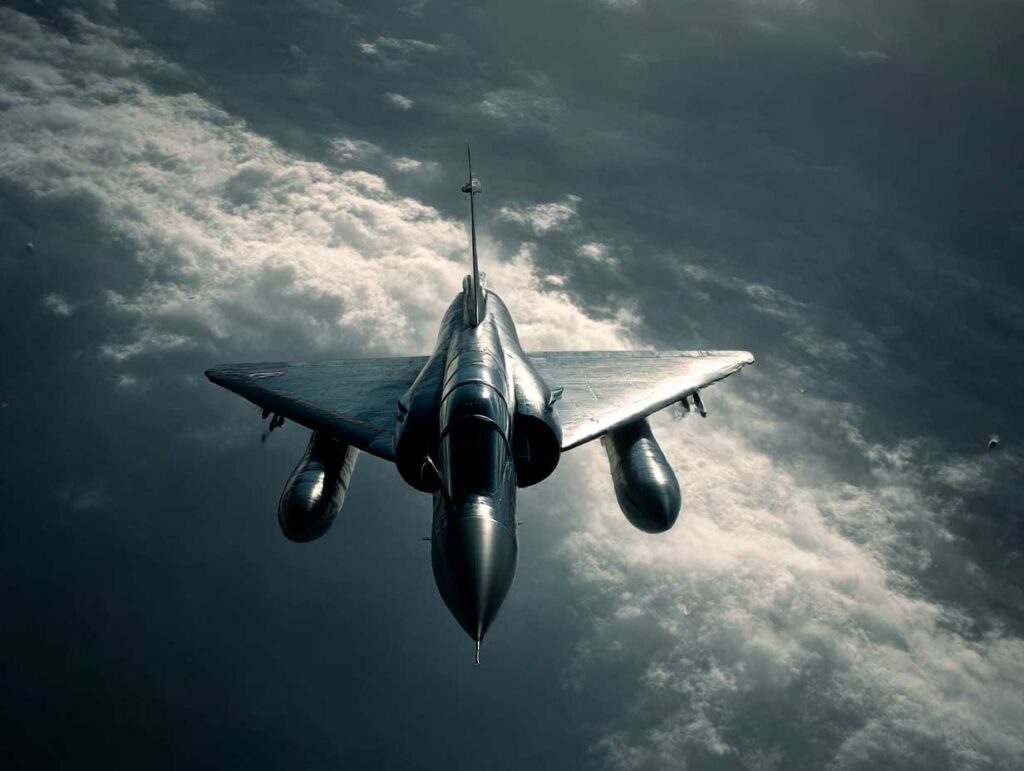
France is extending its support to Ukraine with new Mirage 2000-5F aircraft, strengthening its air capabilities against the Russian army.
A transfer of aircraft that will shape Ukrainian doctrine
On June 26, 2025, the French presidency confirmed the expansion of its military support to Ukraine with the delivery of a second batch of Mirage 2000-5F aircraft, following an initial shipment in January 2025. This transfer is part of a strategy to compensate for the wear and tear on Ukrainian air assets, which have been under constant pressure since the start of the Russian invasion in February 2022. These fighter jets are intended to gradually join the Ukrainian Air Force’s combat forces, where they will serve a dual role: air superiority and precision strike.
The aircraft delivered are taken from the stocks of the French Air and Space Force. These are Mirage 2000-5F aircraft from squadrons that have been withdrawn in favor of the Rafale, notably those operating from Luxeil-les-Bains and Orange-Caritat. To date, 12 additional aircraft have been delivered, bringing the total number of Mirage 2000-5F aircraft delivered to Kyiv to 22.
These aircraft are suitable for air-to-air missions thanks to their RDY-2 radar and MICA EM missile payload, but also air-to-ground missions with munitions such as SCALP-EG or Storm Shadow missiles, already in use in Ukraine since 2023. The aim is to extend the Ukrainian Air Force’s deep strike capabilities while strengthening its tactical deterrence against Russian forces.

A configuration adapted to the Ukrainian operational context
The Mirage 2000-5F delivered by France is a 4+ generation single-engine fighter, designed by Dassault Aviation in the 1990s and modernized several times to meet NATO standards. Equipped with RDY-2 radar, it can engage multiple targets at medium range, combining radar guidance and inertial designation. The aircraft can reach an operational altitude of 16,800 meters, with a maximum speed of Mach 2.2, or approximately 2,350 km/h.
In air-to-air configuration, it generally carries two MICA EM active radar-guided missiles with a range of 80 kilometers, supplemented by MICA IR missiles for close combat. In air-to-ground mode, French engineers have validated the integration of SCALP-EG missiles, the British version of which, Storm Shadow, has already proven its effectiveness against fortified targets in Crimea and Donbass.
Each SCALP missile costs between $850,000 and $1 million, depending on the configuration. Its range of over 250 kilometers, its ability to fly at low altitude in masked terrain, and its BROACH penetrating warhead make it a weapon of choice against command centers, logistics depots, and bunkers.
The Mirage 2000s transferred to Ukraine are undergoing technical refurbishment in Istres, in collaboration with teams from Sabena Technics and Safran Aircraft Engines, in order to adapt the communication systems and mission interfaces to the Ukrainian environment. This process also includes training a limited number of Ukrainian pilots in France over a six-month period, in conjunction with the Mont-de-Marsan Training Center.
A strategic cost borne by the French armed forces
The transfer of the Mirage 2000-5F aircraft is not without consequences for the French Air Force, which is seeing its air fleet reduced in a context of multiple tensions: external operations, NATO missions, and deterrence posture. At the end of 2024, France had around 26 operational Mirage 2000-5Fs, in addition to 96 Rafales in service.
The sale of nearly 85% of the Mirage 2000-5F fleet will require accelerated deliveries of Rafale aircraft to the French military to avoid a loss of operational availability. According to the latest projections, Dassault Aviation is to deliver 18 Rafale F4.1 aircraft to the French Air Force in 2025, compared with the 15 initially planned. This pace is made possible by the reorganization of the assembly line in Mérignac, with a target of 3 to 4 aircraft produced per month.
The cost of this acceleration is not insignificant. It means that France will have to prioritize certain export orders, particularly for Serbia and Indonesia, whose deliveries may be delayed. Support for Ukraine therefore comes at the price of a readjustment of French defense industrial policy, striking a balance between political support, strategic autonomy, and commercial competitiveness.
This operation is also a logistical test. It requires Ukraine to maintain a mixed fleet of MiG-29, Su-27, F-16 (soon to be delivered), and Mirage 2000 aircraft, with separate supply chains. This generates an increased need for mechanics, flight simulators, and spare parts, which France and several European partners have committed to providing through the EU’s military assistance fund.

A political and military interpretation of France’s move
Beyond the operational aspect, the delivery of Mirage 2000-5F aircraft is a strategic signal in the Euro-Atlantic area. It positions France as a militarily committed player alongside Ukraine, with credible air projection capabilities. Unlike the United States, which has prioritized training F-16 pilots, France is focusing on immediate deployment capacity by providing not only the aircraft but also the weapons and expertise.
This move could also strengthen France’s position in the internal NATO debate on the distribution of military effort. While some countries, such as Germany, favor indirect aid, Paris is taking an offensive and technological approach, in line with its interests as a middle power with sovereign industrial capabilities.
On the Ukrainian side, the Mirage 2000s are seen as a complement to the F-16s. Less versatile but quicker to integrate, they will enable a gradual increase in capacity before the arrival of a fully operational F-16 fleet by the end of 2026. The joint integration of SCALP, Storm Shadow, and MICA allows Ukraine to strike beyond the front line while maintaining a certain degree of local air defense, particularly in the southern and eastern regions.
Politically, this transfer also serves French diplomatic interests. It positions Paris as an influential player, particularly in the face of criticism of the ambiguity of its strategic position in 2022. By delivering fighter jets capable of operating rapidly in the Ukrainian theater, France is positioning itself as an operational player, rather than simply a second-tier ally.
War Wings Daily is an independant magazine.